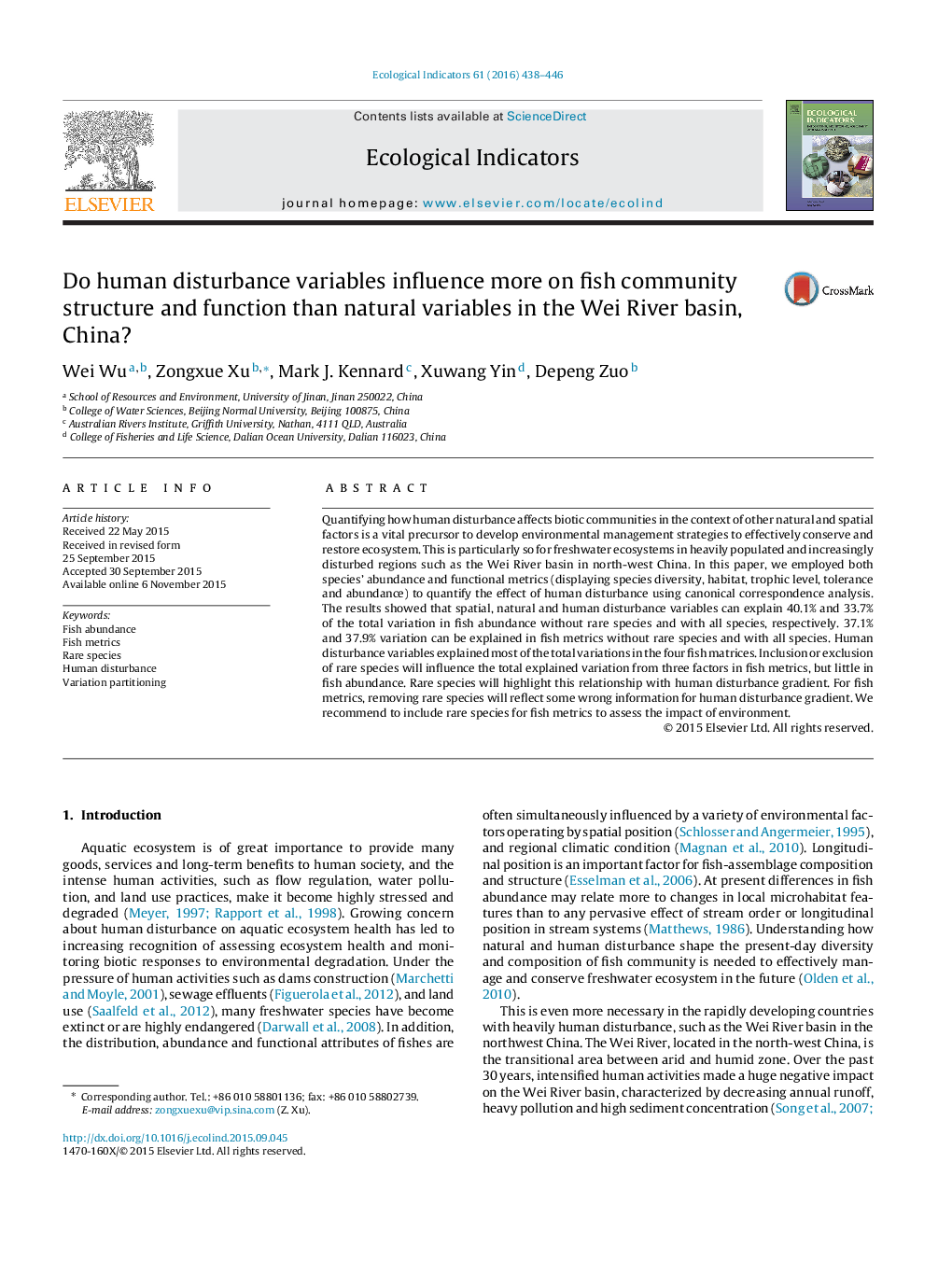| Article ID | Journal | Published Year | Pages | File Type |
|---|---|---|---|---|
| 6293628 | Ecological Indicators | 2016 | 9 Pages |
Abstract
Quantifying how human disturbance affects biotic communities in the context of other natural and spatial factors is a vital precursor to develop environmental management strategies to effectively conserve and restore ecosystem. This is particularly so for freshwater ecosystems in heavily populated and increasingly disturbed regions such as the Wei River basin in north-west China. In this paper, we employed both species' abundance and functional metrics (displaying species diversity, habitat, trophic level, tolerance and abundance) to quantify the effect of human disturbance using canonical correspondence analysis. The results showed that spatial, natural and human disturbance variables can explain 40.1% and 33.7% of the total variation in fish abundance without rare species and with all species, respectively. 37.1% and 37.9% variation can be explained in fish metrics without rare species and with all species. Human disturbance variables explained most of the total variations in the four fish matrices. Inclusion or exclusion of rare species will influence the total explained variation from three factors in fish metrics, but little in fish abundance. Rare species will highlight this relationship with human disturbance gradient. For fish metrics, removing rare species will reflect some wrong information for human disturbance gradient. We recommend to include rare species for fish metrics to assess the impact of environment.
Related Topics
Life Sciences
Agricultural and Biological Sciences
Ecology, Evolution, Behavior and Systematics
Authors
Wei Wu, Zongxue Xu, Mark J. Kennard, Xuwang Yin, Depeng Zuo,
